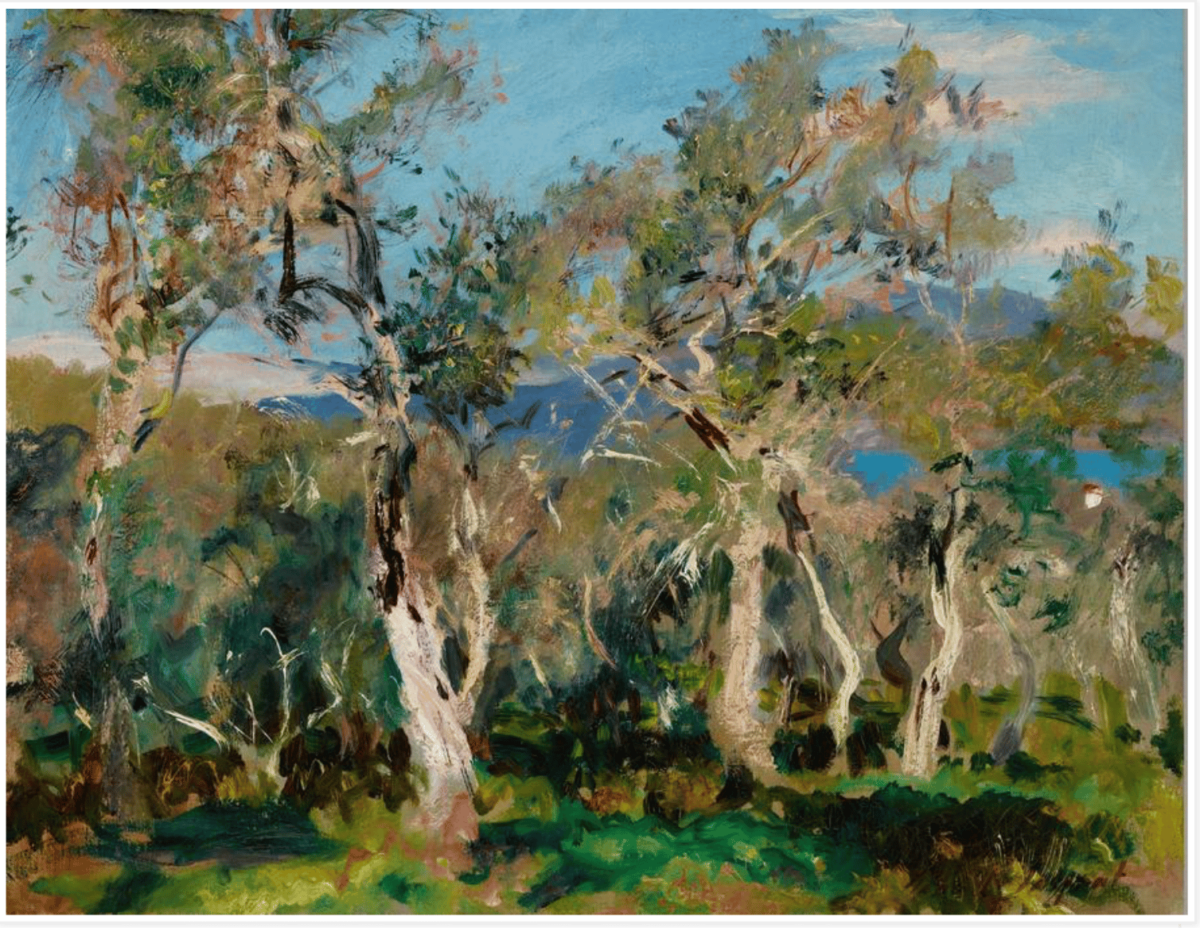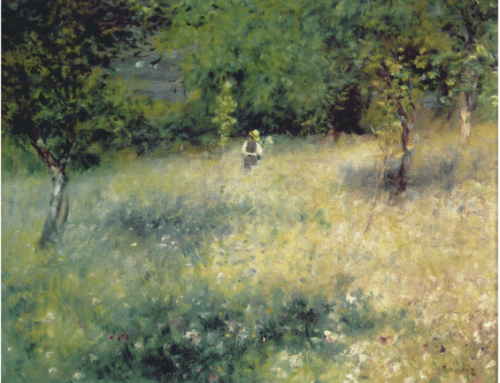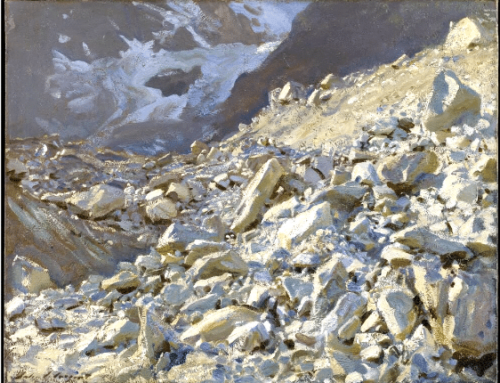The great American expat painter John Singer Sargent permanently closed his portrait studio in 1907. He’d worked hard to become the most sought-after portrait painter for the elite of America and Europe, and he was now a wealthy man who could do as he pleased.
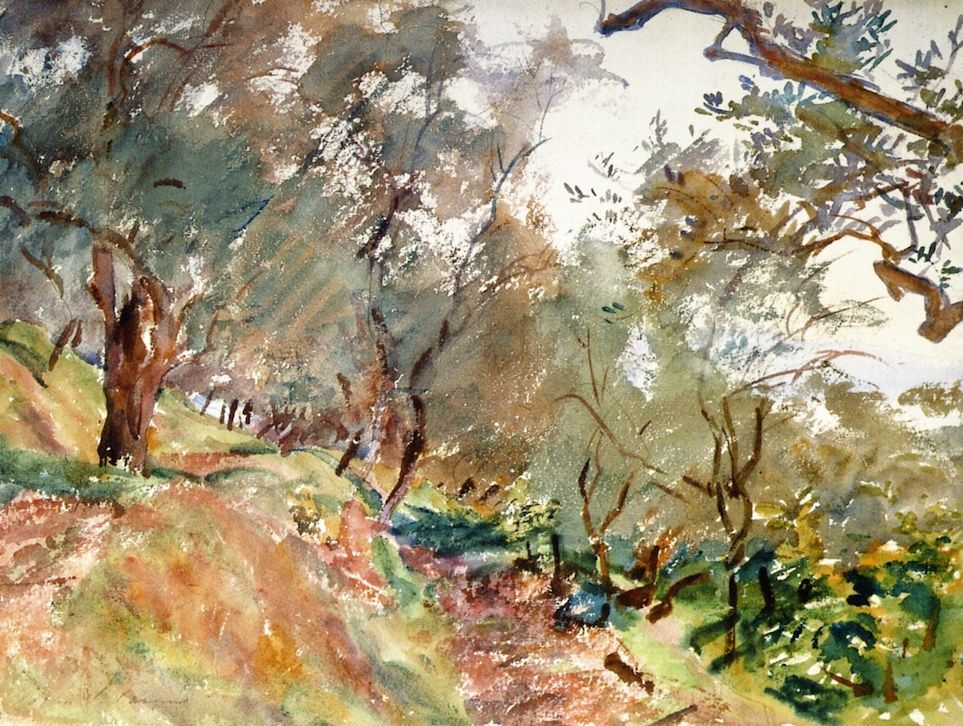
John Singer Sargent, Majorca, Trees on a Hillside, 1908 watercolor
A few months later, he was in paradise: living in warmth and leisure on the tiny unspoiled Spanish island of Majorca in the Mediterranean Sea. There he painted a remarkable series of lush plein air landscapes purely for his own enjoyment.
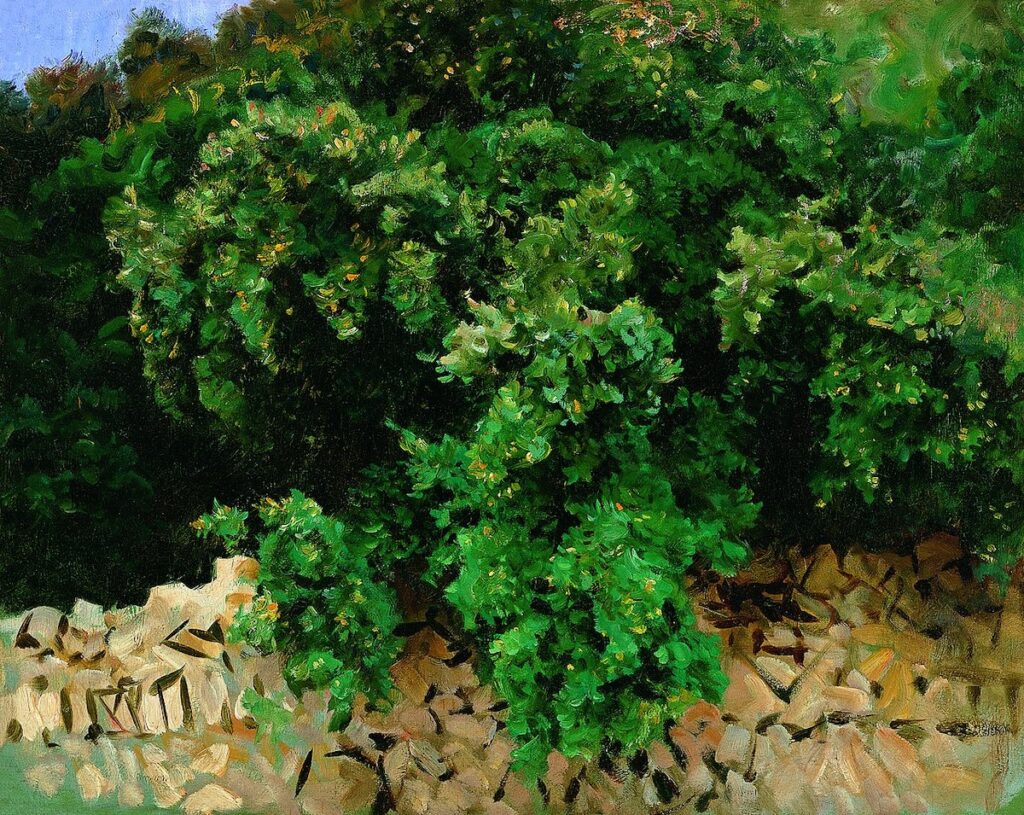
John Singer Sargent, Ilex Wood, Majorca. 1908
His pent-up energy for vivid color and the vibrant life and forms of nature expressed itself in rich, expressive studies of the fruit trees, buckthorn, and wild olive groves among the island’s ancient terraced hills and sunny, spice-scented grottos.
The paintings are the traces of a spirit set free. They work exceptionally well, I think, because of the unfussy brushwork and tropical color paired with interesting and original underlying abstract design. It seems that in his quick plein air studies, his brush was most vigorous and unguarded. His quickened sense of freedom and the brilliant, thriving pulse of natural life on the island encouraged an unfettered informality not present in his salon pictures or formal portraits.
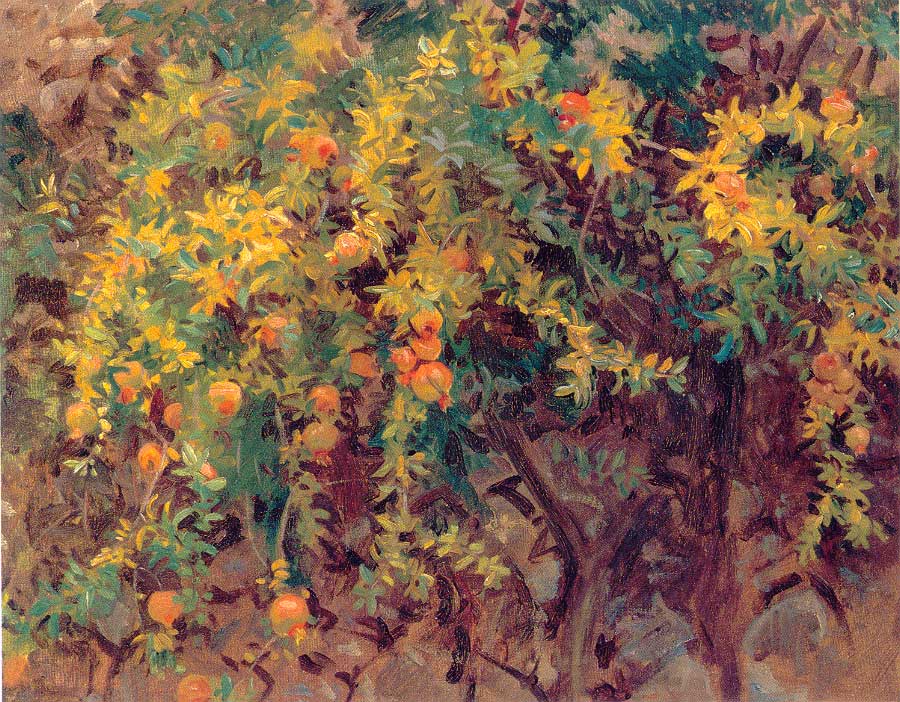
John Singer Sargent, Pomegranates, Majorca (1908)
In the painting above titled Pomegranates, Majorca (1908), Sargent celebrates the explosion of warm leaves and ripe fruit glowing against the deeper shades of the tree limbs and sandy soil. I like to think he sometimes chose the palette for these paintings to match at once the earthiness and the airy sea-light of the island. In the second Pomegranates study below, the fruits are so ripe they’re erupting, spilling clotted flows like lava from their rinds.
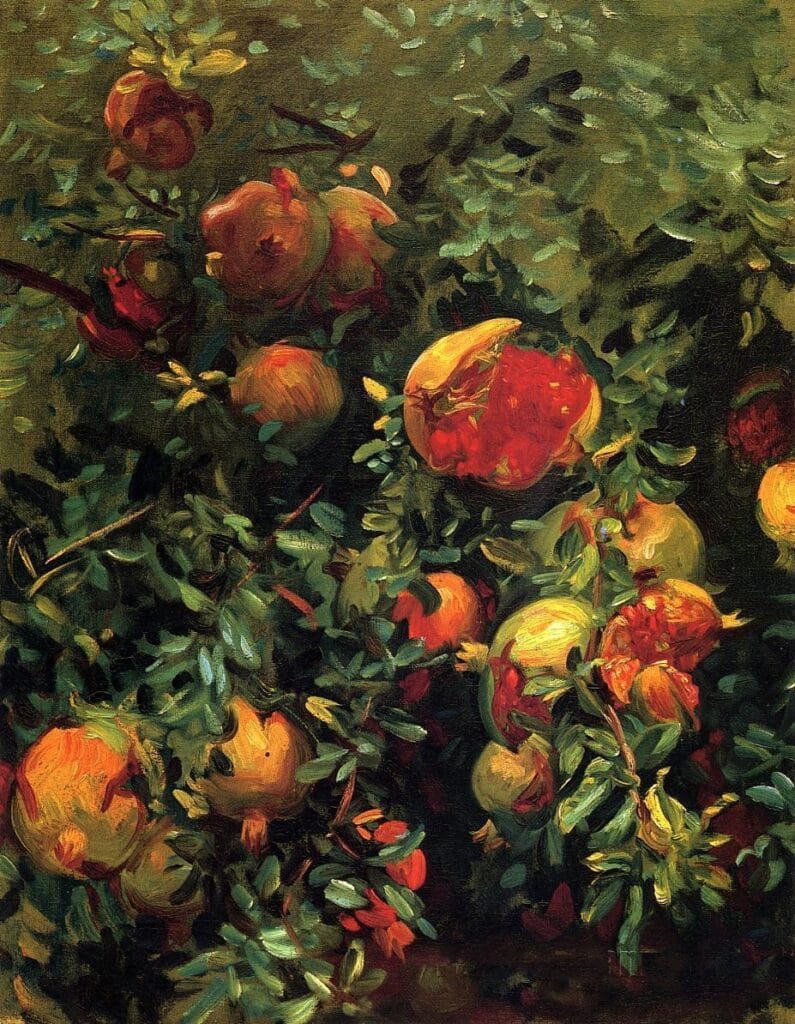
JSS, another plein air study known as Pomegranates, Majorca (1908)
The painting below, Valdemosa, Marjorca: Thistles and Herbage on a Hillside (c. 1908) hangs with a number of masterpieces of American landscape painting in the National Gallery of Art in Washington, D.C.
In person, it can strike the viewer as having the same sort of crackling, ecstatic energy that one finds in the best Abstract Expressionism.
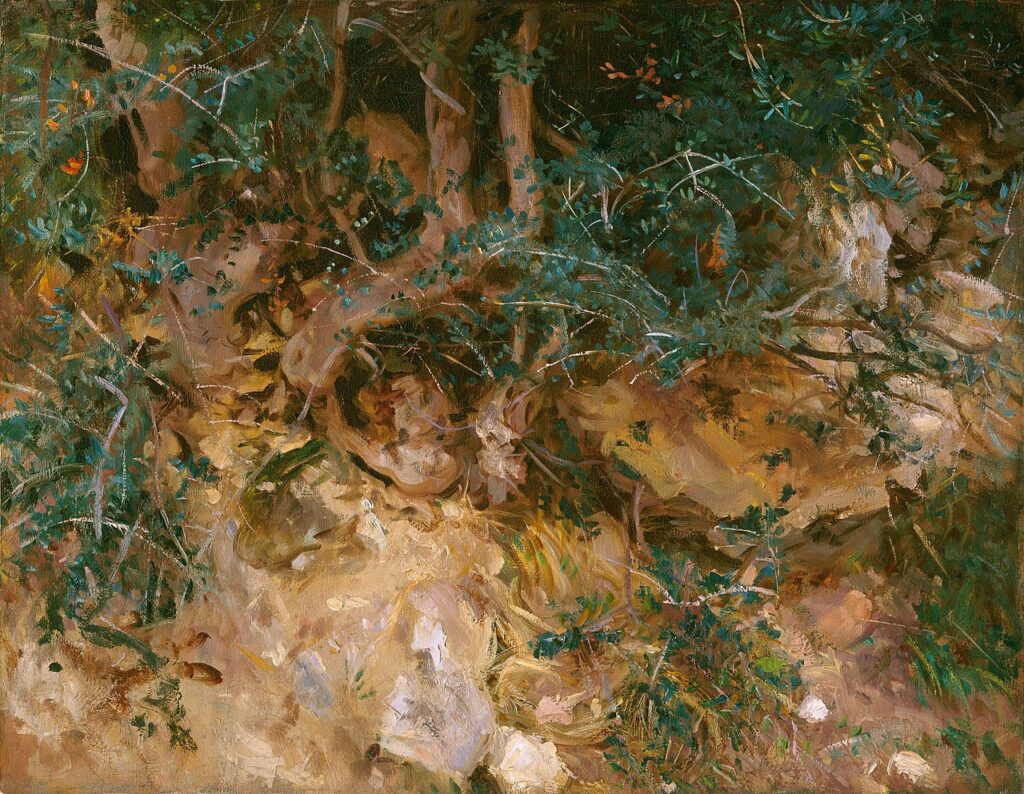
John Singer Sargent, Veldemosa, Majorca: Thistles and Herbage on a Hillside (1908)
Here’s what great painters do: Sargent doesn’t just paint the sandy roots and loping branches – he makes emotive colored marks over an abstract design that combine to express an abiding quality – wildness and life-energy sensed in nature.
In the following close-up you can see that the surface of the painting has more than just the “unfinished” sketch-like quality of an Impressionist painting. Rather, he uses every mark expressively. Each stroke contributes a line or a mass that nominally delineates a branch, a leaf, or a root but primarily contributes to the overall feeling he wants to express.
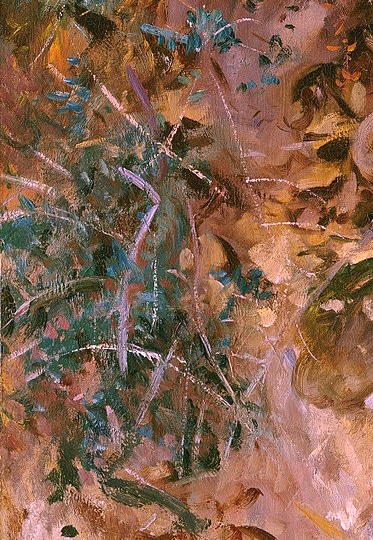
Detail: John Singer Sargent, Veldemosa, Majorca: Thistles and Herbage on a Hillside (1908)
This is just loose painting; it’s wizardry! Anyway, it’s a kind of feeling-first painting … these lines and edges are intentionally energetic. Sargent makes himself a conduit for the haphazard energy inherent in natural design. Jackson Pollock was the painter who took this idea to its logical conclusion.
Here’s a comparison. On the left is a detail from Sargent’s Majorca painting. On the right is a detail from Pollock’s Lavender Mist, also in the National Gallery.
Both employ a dense web of lines and points atop a molten flow of soft-edged color-shapes. The real main difference, as I see it, is that Sargent is also using modified forms and colors of nature, whereas Pollock dispenses with the representational aspect completely in order to maximize the expressive qualities of the medium itself. “I want to express my feelings rather than illustrate them,” he said in 1947. Why would you want to copy or make pictures of nature, he felt, if you could channel its forces directly onto the canvas?
Standing in front of either painting is an electrifying experience: both artists shock us with the sheer exuberance one can wring from paint on canvas.
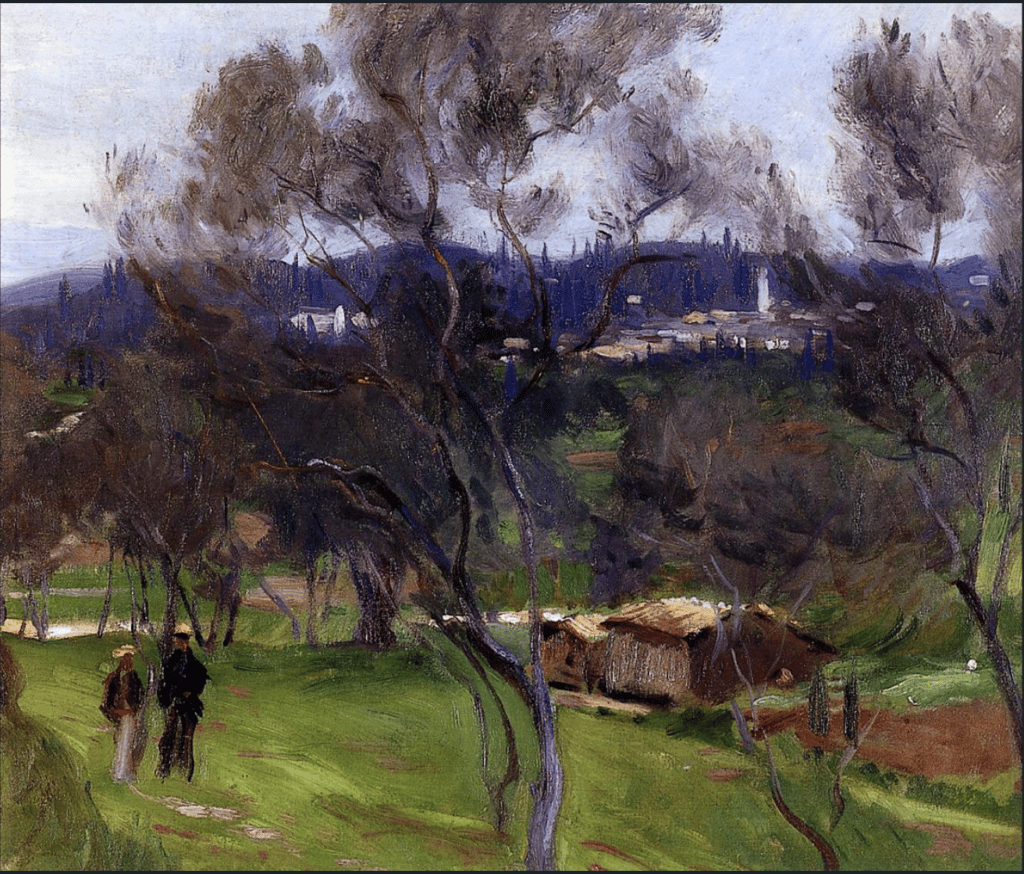
John Singer Sargent, Olives at Corfu, 1909. Pretty much as loose as you want to get with a realistic landscape?
Rick J. Delanty Takes Third in Plein Air Salon Monthly Competition
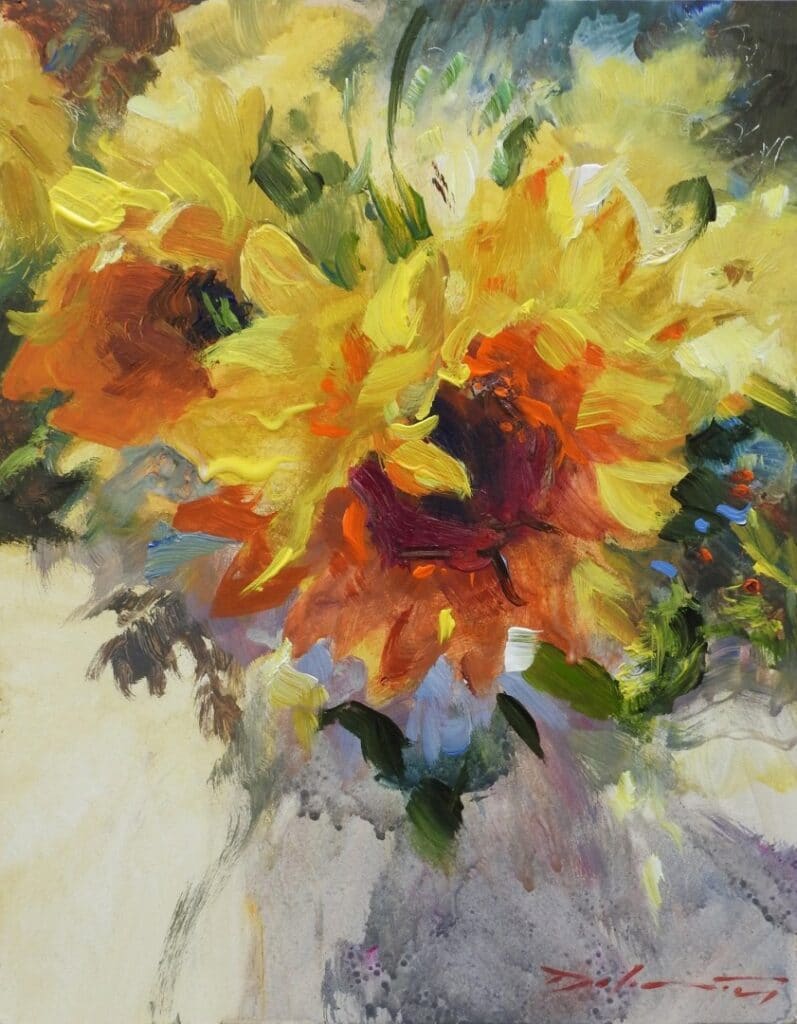
Rick J. Delanty, Sunflowers and Sunlight, for Ukraine, acrylic, 12 x 9 inches
Painter Rick J. Delanty won Third Place in the monthly Plein Air Salon for May. Delanty’s vibrant acrylic depicts a vase of sunflowers bursting with energy and life. Per the title, the work is dedicated to Ukraine’s in its war against Russian aggression.
The monthly Plein Air Salon is an open competition that culminates in a lavish award gala with cash prizes for the best paintings overall in multiple categories. Visit the Plein Air Salon website for your chance to enter your work in the monthly contest, from which the finalists for the grand prizes will be drawn.










